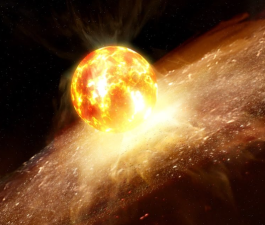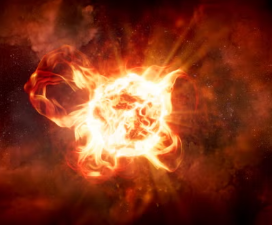Stars make up more than 99.9% of the visible material world. When we look up at the Milky Way, 99.99% of the stars that come into view belong to those huge celestial bodies that emit light and heat - stars. They are the homes of planets and the craftsmen who create miracles in the universe. How does the end of the life of celestial bodies happen? Any celestial body, no matter how big or small, will eventually face extinction.
Stars make up more than 99.9% of the visible material world. When we look up at the Milky Way, 99.99% of the stars that come into view belong to those huge celestial bodies that emit light and heat - stars. They are the homes of planets and the craftsmen who create miracles in the universe. How does the end of the life of celestial bodies happen? Any celestial body, no matter how big or small, will eventually face extinction.

when will they reach the end of their lives?
The lifespan of celestial bodies depends on their mass, composition and evolution. For example, stars generate energy through nuclear fusion. When the fuel is exhausted, they will go through different stages of death and may become white dwarfs, neutron stars or black holes. Planets and satellites may gradually disintegrate due to gravity or external impacts. In general, the death of celestial bodies is a complex process, which is affected by many factors and ultimately depends on their own characteristics and external environment. How long a star can live depends mainly on the environment around it and the speed at which it consumes its own energy. Generally speaking, stars only exist for about 10 billion years at most. The mass of a star directly affects the length of its life cycle. Stars of different masses have significantly different lifespans. Stars with higher mass burn faster and have a relatively shorter lifespan, while stars with lower mass can continue to emit light and heat for longer. This difference in lifespan comes from the different rates of nuclear fusion reactions inside stars. The more massive the star, the higher the core pressure and temperature, which causes the nuclear fuel to be consumed faster. Therefore, the mass of a star is inversely proportional to its lifespan, which is one of the basic laws of stellar evolution in the universe.
The mass and lifespan of a star are inversely proportional, and the larger the mass, the shorter the lifespan. When a star reaches the end of its life, it will not become a fixed celestial body, but may become a white dwarf, a neutron star, or a black hole, depending on the specific situation.
What is the difference between these three states?
When a less massive star reaches the end of its life, it is more likely to become a white dwarf.

What happens after a red dwarf dies?
The universe is a vast and mysterious place, full of phenomena that we may never know about. Although science has made great progress, much of our knowledge remains at the theoretical level. But even so, we still know some knowledge about the vast number of celestial bodies around us.
Red dwarfs are actually the most common type of star in the universe, accounting for 70% of all stars. The closest star to our sun, Proxima Centauri, is a red dwarf. But as the smallest stars, red dwarfs are very low-key, with most of their luminosity in the infrared spectrum, which is invisible to the naked eye. They are also quite cold, burning at temperatures below 4000K (Kelvin). Our sun, on the other hand, is a yellow dwarf, with a surface temperature of 5800K. Red dwarfs burn extremely slowly and are the longest-lived stars in the entire universe, surviving for trillions of years. Stars shine by fusing hydrogen into helium, and in red dwarfs, convection replenishes the hydrogen in the core while also preventing the accumulation of helium in the core. Because the universe is only 13.8 billion years old, we have not actually witnessed the death of a star yet. And we may never see it, after all, depending on how long humans survive.
